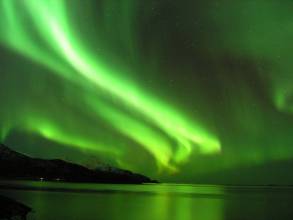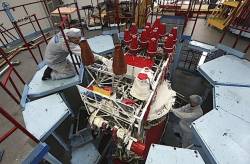Last week, researchers at the University of Bath in England announced findings indicating for the first time that turbulence does not take place within the Northern Lights and instead that unknown mechanisms are responsible for the outages of GNSS. This research concludes that new technology can be developed to overcome these outages from the Northern Lights, also known as aurora borealis.
Last week, researchers at the University of Bath in England announced findings indicating for the first time that turbulence does not take place within the Northern Lights and instead that unknown mechanisms are responsible for the outages of GNSS. This research concludes that new technology can be developed to overcome these outages from the Northern Lights, also known as aurora borealis.
The aurora borealis in the Northern Hemisphere and the aurora australis in the south are known to wreak havoc on satellite-based global positioning systems, and until now, it was assumed it was the result of plasma turbulence within these disruptive light shows.
But with this new research — for the first time — scientists have shown that turbulence doesn’t actually exist in the Northern Lights, which means something else is responsible for the historic blackouts and unusual outages in GPS signals. The research was published in the Journal of Geophysical Research.
"It remains to be understood exactly what physical mechanism is the cause of these observations," researchers from the University of Bath in the United Kingdom conclude. "Hence, more measurements and new theory are necessary to understand this issue."
Aurorae occur during solar storms, when electrically charged particles emitted by the Sun excite gas particles in Earth’s upper atmosphere, at an altitude of about 300 kilometers (185 miles). This causes the molecules in the atmosphere to release light particles— or photons — resulting in the bright bursts of light. It is during solar storms where abnormally massive bursts of charged particles from the Sun are fired toward the Earth, resulting in a disturbance in the balance of the plasma ionosphere.
It has been thought for some time that this turbulence is what causes widespread blackouts experienced during severe solar storms, plus major satellite disturbance and malfunctions in GPS-based navigation.
Observing the Northern Lights in the city of Tromsø in northern Norway, the researchers at the University of Bath used GNSS signals to identify how the light show interfered with GPS signals in real-time.
GNSS is used to pinpoint the geographic location of a user’s receiver anywhere in the world, and systems based on this data include the U.S.’s GPS, the Russian Federation’s GLONASS, China’s BeiDou, and Europe’s Galileo.
During the Northern Lights, one group of researchers used radar technology to track the visuals of the aurora, while the other tracked the effects on GPS signals. The idea was to identify the plasma structures that give rise to disturbances on the GPS radio link, according to the study.
By measuring turbulence in the ionosphere, they were hoping to link the two up, but instead report several instances where GPS glitches occurred while the turbulence index remained eerily stable.
"In general, the intensity scintillation index remained very small and constant throughout all of the measurements," the research states.
Instead of turbulence, the researchers say the phenomenon has to be down to a "new instability mechanism" that operates in the ionosphere where aurorae appear, but at this point, they are unsure about this mechanism.
"The potential impact of inaccurate GNSS signals could be severe. While outages in mobile phones may not be life threatening, unreliability in satellite navigations systems in autonomous vehicles or drones delivering payloads could result in serious harm to both humans and the environment," said Biagio Forte, one of the researchers and authors of the paper “Identification of scintillation signatures on GPS signals originating from plasma structures detected with EISCAT incoherent scatter radar along the same line of sight.”
Forte added, "This new understanding of the mechanisms which affect GNSS outages will lead to new technology that will enable safe and reliable satellite navigation."
The study’s conclusion states the present analysis has identified and quantified for the first time a causal relationship between auroral ionization structures (as measured by the European Incoherent Scatter [EISCAT] UHF radar) and scintillation on GPS signals (as measured on GPS radio links co-aligned with the radar beam). The EISCAT UHF radar was pointed in the line of sight of a given GPS satellite, the satellite signal being recorded by means of a GPS scintillation monitor co-located with EISCAT UHF transmitter at Tromsø.
The experiment provided new insights into the type of structures that cause scintillation on GPS L band signals at auroral latitudes.
Additionally, the researchers conclude that in the future new technology can be developed to overcome these GNSS outages from the Northern Lights.






